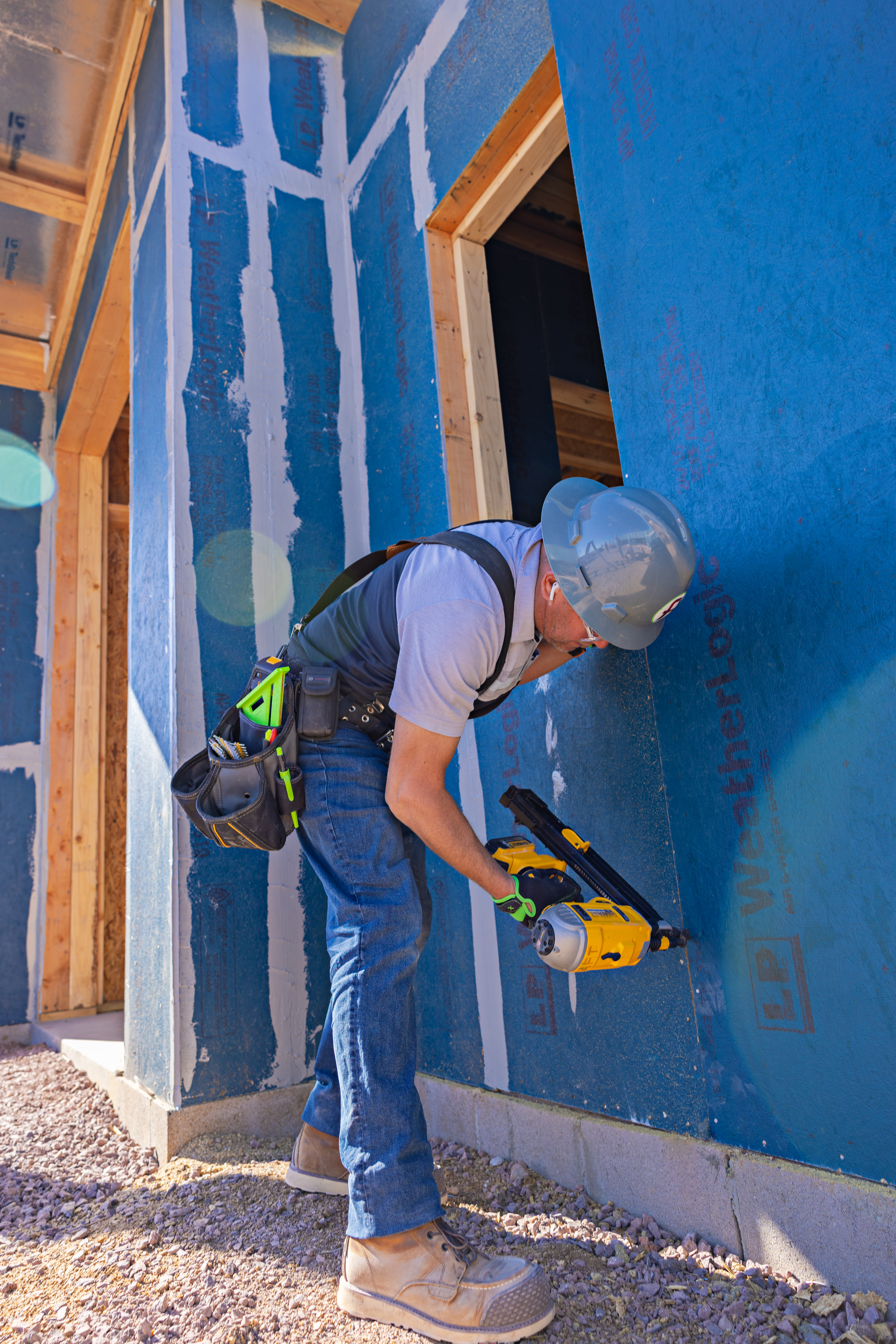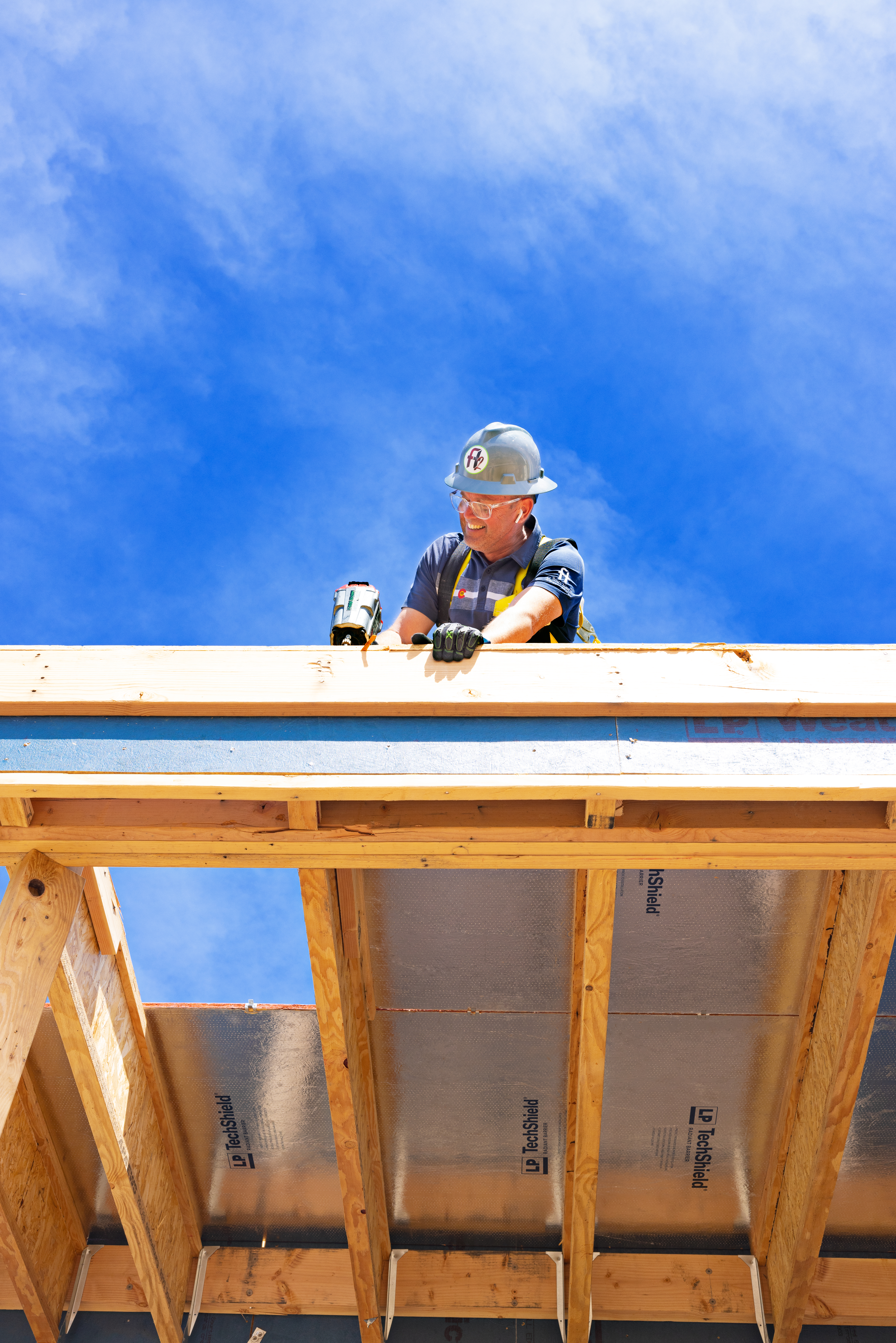Menu
How to Drive Effective Communication and Collaboration on the Jobsite
Every jobsite has a ton of moving parts, from product shipments, supplies, and schedules to subcontractors and homeowners. It’s no wonder that many project teams can struggle to maintain quality jobsite communication and collaboration throughout the building process. And when communication slips, construction companies inevitably deal with costly errors, inefficient workflows, delayed projects, or wasted time, leaving clients and the team frustrated.
However, it doesn’t have to be this way. By applying a few key strategies, builders can drive strong construction collaboration and communication at every jobsite, resulting in efficient work, empowered teams, and ultimately satisfied homeowners.
6 Strategies to Improve Jobsite Communication and Collaboration
Start With Collaborative Construction Leadership
Effective jobsite communication and collaboration always starts with having great leadership at the helm, the kind that can manage and motivate a team to stay on task even when difficulties arise.
But as a construction company, you also need to ensure your project leaders are communicating and collaborating well with their project managers, subcontractors, and other key stakeholders. Let them set the example for everyone else to follow. Otherwise the rest of your construction team won’t buy into the collaborative construction approach you’re trying to establish.
Create an Organized Chain of Communication (and Stick to It)
As you begin your project, you should set up an agreed-upon chain of command that the entire jobsite team knows and follows. This plan will spell out which key players (like architects and general contractors) are responsible for communicating certain project information to one other and their teams.
Knowing who’s in charge of what in the jobsite communication process reduces uncertainty and confusion. It also gives your team members a clear path to get the right information to perform their duties and ask questions efficiently. By sticking with your chain of command throughout the project, you can communicate important details to the entire team quickly and ensure no one misses vital project information.

Schedule Regular Meetings
Nobody likes to be left in the dark on a project. That’s why it’s important to hold regular meetings with your team to communicate key updates and expectations, ensuring everyone’s on the same page. This also provides a great opportunity to remind your team of the bigger picture. By explaining how their responsibilities contribute to the overall project and affect other teammates, you’re promoting team building in construction and mutual cooperation on the jobsite.
Champion Open Jobsite Communication and Invite Feedback
To develop strong construction collaboration and communication, you must keep the lines of communication open for your entire team. This means empowering everyone to feel the freedom to ask questions when they don’t understand or need to clarify their tasks, as well as engage in active dialogue with their supervisors for unexpected issues.
At the same time, this open communication policy should also solicit feedback from your team. By inviting your team to regularly share their feedback, you’re showing that you appreciate and value their perspectives. Plus, you may get some new ideas that address ongoing issues or enhance the project’s output.
With the chance to be heard, everyone will feel like an important part of the team, boosting morale and encouraging a more collaborative environment. Brad Leavitt, President of AFT Construction, says it well: “When people know you care, they show up to the job as their best selves.”

Build Team Camaraderie After Hours
Collaborative construction at the jobsite can also be impacted by what goes on outside of it. With larger jobsites especially, construction workers can easily operate in isolated silos and rarely interact with other teammates. To combat this, building firms or project leaders can organize happy hours and other social outings when the workday ends to facilitate connection and relationships among the team. As everyone gets to know each other, they’re more easily able to overcome jobsite communication barriers. This camaraderie can even create a better environment for team building in construction and collaboration during the project.
Use the Right Materials
Believe it or not, the building materials used on the jobsite can affect your team’s communication and collaboration efforts as well. Low-quality options can frustrate and slow down your team’s efficiency, so it’s important to prioritize premium materials instead, like the industry-leading LP Structural Solutions portfolio. Our LP Novacore® Thermal Insulated Sheathing, for example, is easy to install, streamlining your team’s communication process and workflow. These materials are also highly resilient, which boosts your team’s morale and collaborative output knowing their work will hold up on the jobsite and long after the project ends.
Access More Collaborative Construction Tips with LP® Building Solutions
Implementing these communication and collaboration strategies at your jobsite can enable your team to achieve quality results that enhance your company’s reputation and grow your business. If you’d like even more construction tips to help your firm thrive, explore our blog. At LP Building Solutions, we’re all about providing world-class products (and expertise) for construction leaders like you.
Continue Reading
Business Solutions
4 minQ&A: How Home Orientation Impacts Continuous Insulation
There’s a lot to consider when it comes to building an energy-efficient home for your clients and the many nuances that change with each build—including its orientation to the sun.
Continue ReadingResiliency Solutions
5 minHOW A RADIANT BARRIER CAN IMPROVE BURIED DUCT PERFORMANCE
There are several insulation methods based on attic design, but ducts placed over the bottom of truss chords and buried under insulation in a vented attic is a popular builder option.
Sustainability Solutions
6 minCarbon Negative, Future Positive: LP® Structural Solutions Portfolio Releases Environmental Product Declarations
In an era where environmental responsibility is paramount, we are proud to announce a remarkable achievement: the LP® Structural Solutions portfolio has been officially designated as carbon negative. This milestone is a testament to our unwavering commitment to redefining construction materials for the better with a focus on sustainability, resiliency and groundbreaking advancements.
Sustainability Solutions
8 minWhy Build With Carbon Negative Building Materials?
In our pursuit of sustainable and environmentally friendly products, we completed five LCAs and EPDs for our LP® Structural Solutions portfolio. Along with LP® SmartSide® Trim & Siding, these EPDs demonstrate the carbon negativity of our products. That means that our products store more carbon than is released during their entire life cycle, making us a meaningful part of the climate solution.